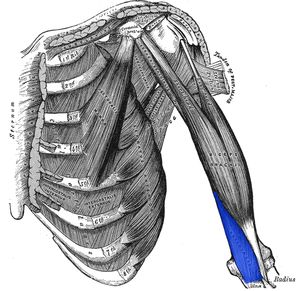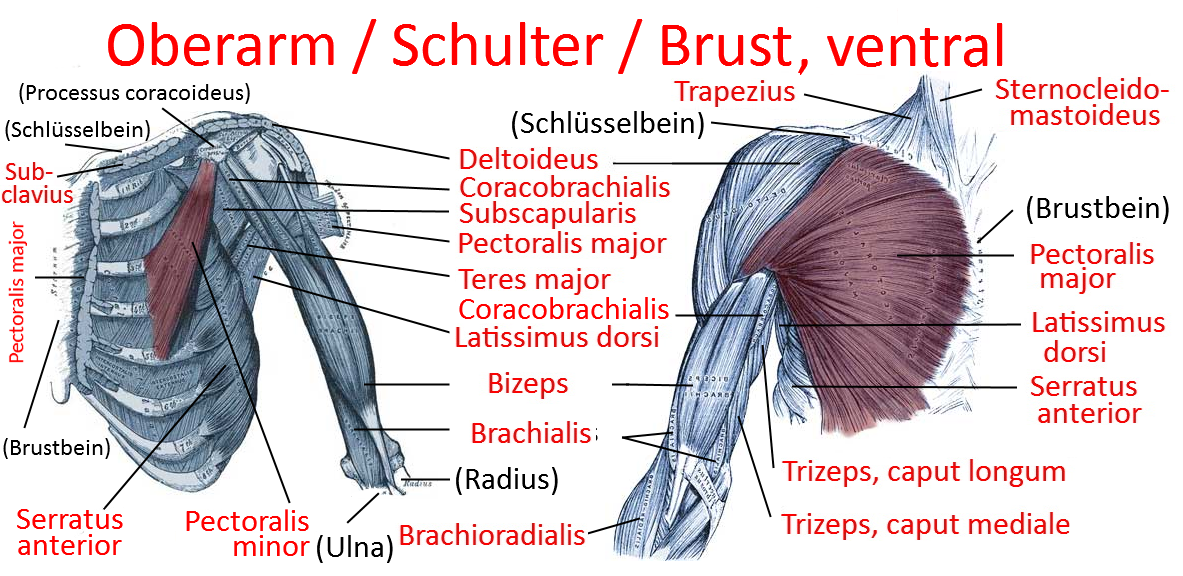yogabook / muscles / brachialis

Linkmap

Brachialis
Monoarticular muscle that originates from the distal half of the humerus and attaches to the ulna; the strongest arm flexor. It is significantly stronger than the biceps, especially when the forearm is pronated, and in contrast to the biceps, it can apply a significant torque in the elbow joint even when the elbow joint is still extended. The brachialis lies deeper than the biceps and extends further both ulnarly and especially radially, which is clearly visible further distally. As an anatomical variation, an attachment to the radius instead of the ulna is possible.
Origin: anterior surface of the humeral shaft
Attachment: Anterior surface of the ulna
Innervation: Nervus musculocutaneus from Plexus brachialis from C5-C6 und C7
Antagonists:
Movement: Flexion of the elbow joint
Strengthening postures (): Some of the strengthening postures listed for the biceps are omitted here, as their effect comes from exerting force in the direction of frontal abduction. uttanasana: pull on the lower legs, tryanga mukhaikapada pascimottanasana, janu sirsasana, tensebiceps, pasimottanasana, sarvangasana.
Stretching postures (): The monoarticular brachialis is rarely shortened as it is usually kept sufficiently flexible by the hanging arm. Shortening can occur in rare cases of special sporting or occupational activity or during therapeutic immobilization. This can be countered with all postures with the elbow joint extended, regardless of supination or pronation.
